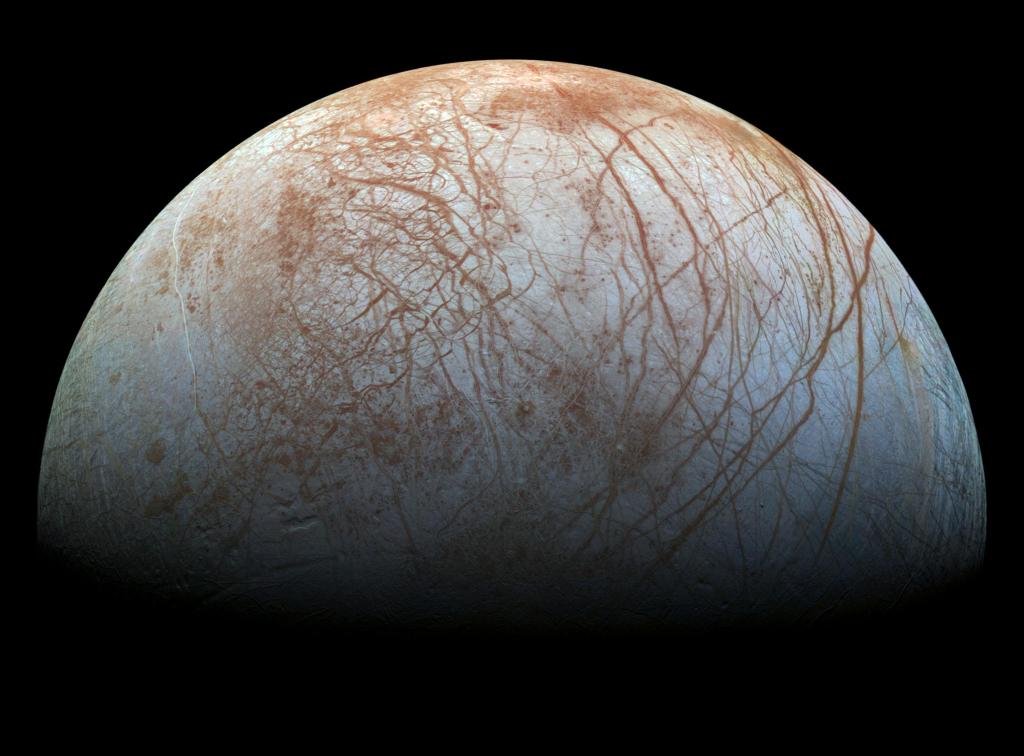In this movie Europa is seen in a cutaway view through two cycles of its 3.5 day orbit about the giant planet Jupiter. Like Earth, Europa is thought to have an iron core, a rocky mantle and a surface ocean of salty water. Unlike on Earth, however, this ocean is deep enough to cover the whole moon, and being far from the sun, the ocean surface is globally frozen over. Europa’s orbit is eccentric, which means as it travels around Jupiter, large tides, raised by Jupiter, rise and fall. Jupiter’s position relative to Europa is also seen to librate, or wobble, with the same period. This tidal kneading causes frictional heating within Europa, much in the same way a paper clip bent back and forth can get hot to the touch, as illustrated by the red glow in the interior of Europa’s rocky mantle and in the lower, warmer part of its ice shell. This tidal heating is what keeps Europa’s ocean liquid and could prove critical to the survival of simple organisms within the ocean, if they exist. The giant planet Jupiter is now shown to be rotating from west to east, though more slowly than its actual rate.
NASA/JPL-Caltech



